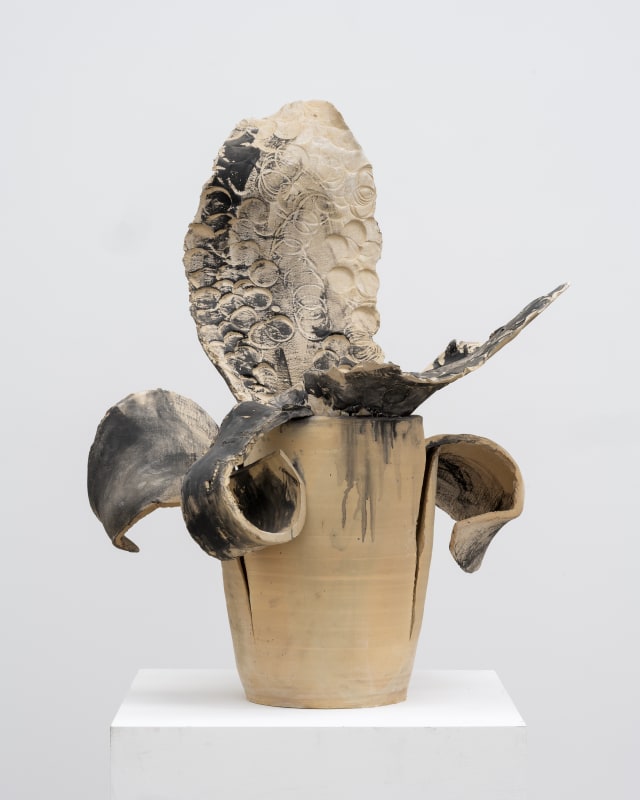Barceló El Ceramista By Cornelius Tittel
What does Miquel Barceló think will remain of his work in some distant future? Even on this sunny afternoon, the artist cannot help but be reminded of a classical tragedy: Achilles's confrontation with the Queen of the Amazons. His sword plunges into her chest and, after one last look from Penthesilea, Achilles is hopelessly in love - with a woman he just killed. All that remains of Panaenus's great lost painting of this moment are admiring accounts of his classical Greek contemporaries, and one small, black-and-red vase in the British Museum that's a copy of a copy of a copy of the original.
If all of Barceló's paintings burn to ashes in the fires of the coming centuries, he hopes that a fragment of one of his vases might still be rescued from the wreckage, a piece of fired clay with an octopus on it, or a fish, or a wave, or his face. In the best-case-scenario, someone will be touched, just as we're still touched at the sight of the dead - or almost dead - Amazon queen. As fragile as ceramics may be, for Barceló it's a medium that not only anticipated painting, a genre of painting, the mother of painting, and like paint, the soft clay becomes flesh."
Barceló is standing in his ceramics studio in Vilafranca, a sleepily dusty village at the center of Mallorca, removed from both the tourist towers and the chic finca scene of the most-visited Balearic island. As he walks between the long rows of tables - stroking a vase here, patting a head there - one cannot help but suspect that this actually is the beating heart of his work. Barceló may be far the most expensive living painter in SPain, but as a good Spanish son, he knows exactly what he owes that "mother of painting": respect, hard work, and, above all, regular visits.
Not a week goes by in which he doesn't work in the former brick factory he took over - including its employees - after its bankruptcy, and whose traditional output of building materials he continues to use to create sculpures. "Sometimes, I imagine each of these bricks represents one of my ancestors, Mallorcans no longer with us." Bricks as skulls, as a cairn - Barceló has already built entire walls out of them, most recently at the Musée Picasso.
When I tell him that his compatriots Miró and Picasso, who were also passionate about ceramics, would’ve marveled at his productivity, Barceló smiles his innocent smile: “Unlike them, I was fortunate enough to discover ceramics at a less advanced age.”
Barceló isn’t claiming he’s better or more prolific. It’s his ambition that sets him apart from his idols. Whether it’s the cathedral of Palma - where, using 150 tons of clay and 2,000 kilograms of enamel to fill the 300 square meters of wall space, he packed the right-hand apse with a monumental meditation on the miracle of the loaves and fishes - or his Paso Doble performance - in which he and the dancer Josef Nadj assaulted a wall of clay, in the end almost suffocating Nadj under a pile of clay vases, still wet - Barceló is breaking new ground in ceramics, pushing the boundaries of what’s conceivable in the medium. Yet he never loses sight of its origins.
Barceló trained with the Dogon people, an indigenous ethnic group in Mali, where he spent every winter until Boko Haram grew too strong in the region. They introduced him to their technique, qhich dates back to Neolithic times, showing him how to mix clay with dried cow or camel dung, broken glass, or straw as thin as cellophane noodles.
"When I started working with ceramics in Mali, to me it was a continuation of painting through other means. By now, I think I can do completely different things with ceramics. I can use it architecturally. It remains a kind of painting, only you're inside of it."
Ceramics, he says, is the original art. Ancient yet always novel. "Like reading a new poem and feeling like you've always known it by heart."
Words by Cornelius Tittel
Photography below by François Halard




















































































































































































